Address
304 North Cardinal
St. Dorchester Center, MA 02124
Work Hours
Monday to Friday: 7AM - 7PM
Weekend: 10AM - 5PM
Address
304 North Cardinal
St. Dorchester Center, MA 02124
Work Hours
Monday to Friday: 7AM - 7PM
Weekend: 10AM - 5PM

In a world where technology and convenience intertwine with our daily routines, the kitchen has emerged as a frontier for innovation. At the heart of this culinary revolution are integrated circuit boards, the unsung heroes that power the smart kitchen appliances shaping our modern lives. Today, we delve into the intricate world of these boards, exploring their impact, challenges, and the promising future they promise for our kitchens.
Ah, the dawn of the smart kitchen revolution is upon us, and it’s a transformation that’s as thrilling as it is innovative. At the very heart of this culinary renaissance are the unsung heroes: integrated circuit board factories. These modern marvels are the silent architects of the sleek, intelligent appliances that are changing the way we cook and live.
Picture this: a kitchen that not only boils water but predicts your meal prep needs, a fridge that knows what’s inside and suggests recipes, or a stove that adjusts heat levels to perfection—these aren’t just futuristic dreams; they’re becoming our daily reality, all thanks to the intricate work of these factories.
These factories are the pulse of the smart kitchen industry, turning raw silicon and copper into the brains of tomorrow’s appliances. The integrated circuit (IC) board is the crux of these technological marvels, a marvel in itself. It’s a complex puzzle of tiny transistors, capacitors, resistors, and other electronic components, meticulously arranged on a tiny semiconductor chip. The board’s role is both multifaceted and vital: it controls the functionality of the appliance, processes information, and makes decisions, all in the blink of an eye.
As we delve into this revolution, it’s important to recognize the impact of these factories. They are not just producing hardware; they are shaping an entire lifestyle. The smart kitchen isn’t just about convenience; it’s about a holistic approach to cooking and living that enhances our lives in countless ways.
Consider the environmental impact, for example. Smart appliances are designed to be more energy-efficient, reducing our carbon footprint. They are also programmable, allowing users to optimize their use of these devices for maximum energy savings. The integration of IoT (Internet of Things) technology in these appliances means they can be remotely monitored and controlled, adding another layer of efficiency and convenience.
In the realm of culinary experiences, these integrated circuits are opening new doors. Smart ovens can analyze the food being cooked and adjust heat distribution to ensure even cooking every time. Induction cooktops with ICs can change their power output in real-time, making them faster and more energy-efficient than traditional burners. These innovations are not just making cooking easier; they’re also elevating the quality of our food and the satisfaction of the cooking experience.
The journey from concept to consumer is a complex one, and integrated circuit board factories are the key link in this supply chain. They take raw materials and turn them into the sophisticated, high-performance components that power today’s smart kitchen appliances. This transformation is not just about the technical know-how but also about the precision and quality control that ensures each IC board is a reliable, long-lasting product.
As we stand on the cusp of this revolution, it’s fascinating to see the variety of applications these ICs find in kitchen appliances. From smart dishwashers that optimize their cycle times to smart toasters that can adjust their browning levels, the possibilities are as endless as they are exciting.
The European market has been at the forefront of this revolution, with its demand for high-quality, innovative kitchen appliances. Integrated circuit board factories in Europe are responding with cutting-edge technology that combines form and function, appealing to the sophisticated tastes of European consumers. From sleek designs that complement modern aesthetics to cutting-edge features that simplify cooking, these factories are setting the standard for the global smart kitchen industry.
In the United States, the approach to smart kitchen appliances is a blend of convenience and lifestyle. The integrated circuit board factories here are focused on creating products that seamlessly integrate with the daily lives of Americans. This includes not only the functionality of the appliances but also the design, ensuring they fit into a wide range of kitchen environments.
As we explore the work of these factories, it becomes clear that the future of the smart kitchen is not just about technology; it’s about how that technology can enrich our lives. These factories are not just producing hardware; they are crafting experiences. They are creating appliances that can learn, adapt, and anticipate our needs, making cooking not just a task but a delightful experience.
In conclusion, integrated circuit board factories are the beating heart of the smart kitchen revolution. They are the unsung heroes behind the sleek, intelligent appliances that are transforming our kitchens into hubs of modern living. As these factories continue to innovate and push the boundaries of what’s possible, the future of cooking is bright and full of promise.

The integrated circuit board, often referred to as the “brain” of modern kitchen appliances, plays a pivotal role in transforming traditional cooking into a seamless, efficient, and experience. These tiny, yet powerful components are the driving force behind the latest innovations in the culinary world.
In the realm of kitchen appliances, the integrated circuit board serves as the command center, orchestrating the functions of various components to ensure seamless operation. From the smallest countertop blender to the most sophisticated range oven, these boards are integral to the performance and functionality of each appliance.
One of the key advantages of integrated circuit boards is their compact size. Unlike the large, bulky control panels of yesteryears, these boards can be integrated into even the smallest kitchen gadgets, allowing for sleek and space-saving designs. This miniaturization has not only enhanced the aesthetic appeal of kitchen appliances but has also paved the way for new, innovative products that were once unimaginable.
The integration of advanced technology within these circuit boards has revolutionized the way we interact with our kitchen appliances. With features like touchscreens, voice command, and even AI integration, these boards have become the hub for smart kitchen solutions. Users can now control their appliances remotely, monitor cooking times and temperatures, and even receive personalized recommendations for recipes and cooking techniques.
In addition to enhancing user experience, integrated circuit boards have also improved the energy efficiency of kitchen appliances. By optimizing the performance of various components, these boards help reduce power consumption, contributing to a more sustainable and eco-friendly kitchen environment.
The precision and reliability of integrated circuit boards are paramount in the kitchen appliance industry. These boards are designed to withstand the heat, moisture, and occasional splashes that are common in kitchen settings. This durability ensures that appliances remain functional and reliable, even after years of use.
The design of integrated circuit boards is a testament to the advancements in semiconductor technology. High-quality materials and precise manufacturing processes are employed to create these intricate boards. The complexity of these circuits often requires the expertise of skilled engineers and technicians, who work tirelessly to push the boundaries of what is possible in kitchen appliance design.
In the world of kitchen appliances, innovation is key, and integrated circuit boards are at the forefront of this technological evolution. From smart refrigerators that can track food expiration dates to smart ovens that can adjust cooking times based on ingredient type, the possibilities are endless.
One of the most significant contributions of integrated circuit boards to the kitchen appliance industry is the ability to customize and personalize the user experience. With the integration of IoT (Internet of Things) technology, these boards can connect to other devices and systems within the home, creating a cohesive and interconnected smart home ecosystem. Users can enjoy a seamless transition from one appliance to another, with data and settings automatically adjusting to their preferences.
In terms of future developments, we can expect to see even more sophisticated integrated circuit boards that can handle even greater levels of complexity. The potential for advancements in areas such as machine learning and predictive analytics is vast, and these technologies could soon find their way into kitchen appliances, offering users predictive maintenance and even predictive cooking.
The role of integrated circuit boards in modern kitchen appliances is clear: they are the cornerstone of innovation, efficiency, and convenience. As the demand for smart, connected kitchen solutions continues to grow, the importance of these boards will only escalate. The future of the kitchen lies in the hands of these tiny, yet mighty, components, and the possibilities they unlock are as limitless as the culinary creations they enable.
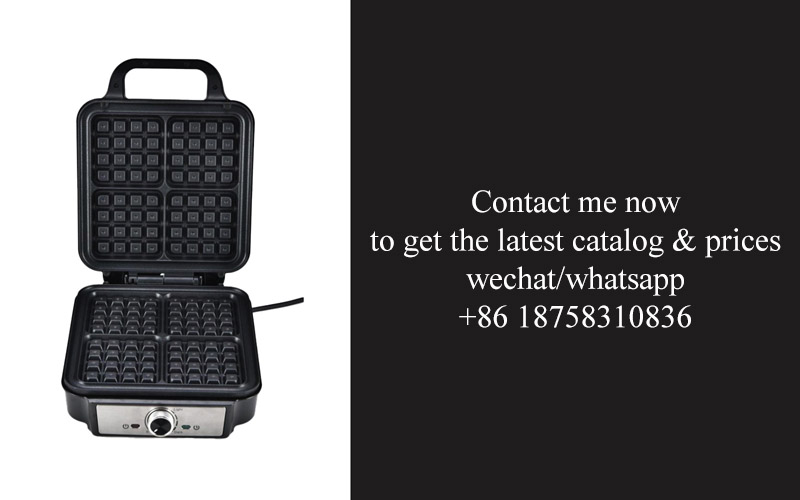
In the heart of the modern kitchen, where culinary art meets technological wizardry, the integrated circuit board (ICB) plays a pivotal role. These tiny, yet powerful components are the backbone of the smart kitchen revolution, driving innovation and reshaping the way we cook. Let’s delve into how ICB factories are at the forefront of this transformation.
The miniaturization of technology has enabled the creation of complex circuits that fit seamlessly into kitchen appliances. These circuits are not just compact; they are also highly efficient, allowing for precise control over the cooking process. ICB factories are at the forefront of this miniaturization, pushing the boundaries of what’s possible in kitchen technology.
One of the key advancements brought about by ICBs is the ability to integrate multiple functionalities into a single device. For instance, a modern oven with an ICB can not only bake and roast but also monitor the food’s temperature and humidity, adjusting its settings in real-time to ensure perfect results every time. This level of sophistication was once unimaginable, but it’s now a reality thanks to the relentless innovation in ICB manufacturing.
The integration of sensors and processors into kitchen appliances has opened up a world of possibilities. Smart cookers, for example, can analyze the ingredients and cooking time, then adjust the heat and cooking mode accordingly. This not only simplifies the cooking process for the user but also enhances the quality of the final dish. ICB factories are instrumental in developing these sophisticated systems, ensuring that each component works in harmony.
In the realm of smart kitchen appliances, connectivity is king. ICBs enable devices to communicate with each other and with the user, providing a seamless and interactive cooking experience. Imagine a scenario where your refrigerator, oven, and stove all talk to each other, optimizing the cooking process for efficiency and taste. This interconnectedness is made possible by the advanced ICBs produced by specialized factories.
Energy efficiency is another critical aspect of modern kitchen appliances, and ICBs play a significant role in this. By optimizing the power distribution and control mechanisms, ICBs help reduce energy consumption without compromising performance. This not only benefits the environment but also saves money on utility bills for consumers. ICB factories are constantly refining their technology to ensure that kitchen appliances are as energy-efficient as possible.
Customization is also a growing trend in the kitchen appliance market, and ICBs are a key enabler. With the ability to process complex algorithms, ICBs can tailor the cooking experience to individual preferences. Whether it’s adjusting the cooking temperature for different types of meat or optimizing the recipe for various dietary needs, ICBs make it possible for kitchen appliances to be as personal as the user.
The rise of the smart kitchen has also led to the development of new applications for ICBs. For example, voice-activated kitchen appliances are becoming increasingly popular, and ICBs are essential for processing voice commands and executing the corresponding actions. This level of convenience and hands-free operation was once a futuristic dream, but it’s now a reality thanks to the advancements in ICB technology.
As the demand for smart kitchen appliances grows, so does the need for specialized ICBs that can handle the increased complexity. ICB factories are investing in research and development to create more powerful, reliable, and adaptable circuits. This focus on innovation ensures that the future of cooking will be characterized by even more sophisticated and user-friendly appliances.
In conclusion, the role of ICB factories in shaping the future of cooking is undeniable. From enabling the integration of multiple functionalities to driving energy efficiency and customization, these factories are at the heart of the smart kitchen revolution. As technology continues to evolve, we can expect even more groundbreaking advancements that will redefine the way we cook and enjoy our meals.
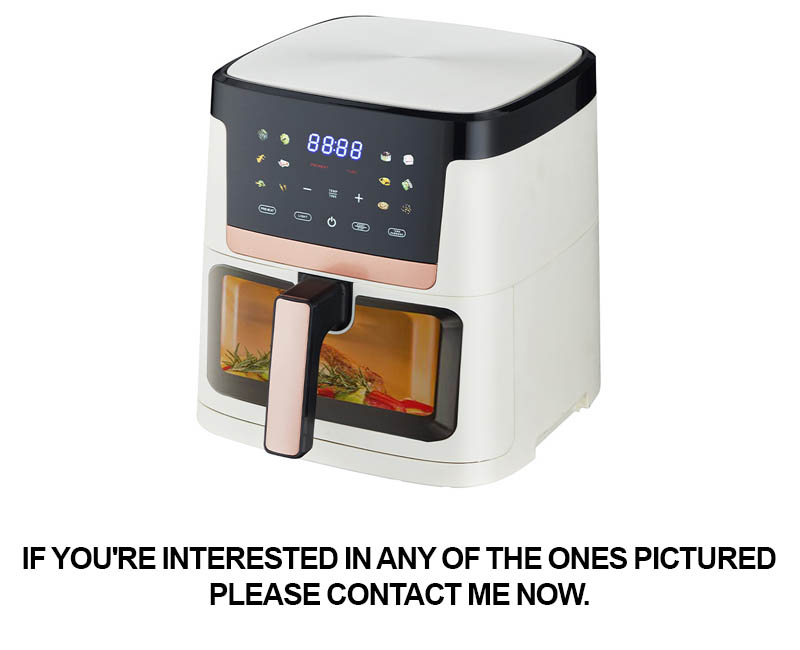
The European and American kitchen appliance industries are undergoing a remarkable transformation, driven by a blend of technological advancements, consumer demands, and environmental concerns. Here’s a closer look at the key trends that are shaping these markets.
Smart Connectivity is KingIn both Europe and the US, the integration of smart technology into kitchen appliances is becoming increasingly prevalent. Consumers are gravitating towards devices that can be controlled remotely, offering convenience and efficiency. Smart refrigerators, ovens, and dishwashers, equipped with integrated circuit boards that enable Wi-Fi connectivity, are becoming standard features in many homes.
Energy Efficiency Gains TractionEnergy conservation is a significant driver in both the European and American markets. As consumers become more environmentally conscious, there’s a growing demand for appliances that consume less energy. This trend is reflected in the design and functionality of kitchen appliances, with many models now boasting energy-saving modes and certifications like the Energy Star label in the US.
Design and Aesthetics Take Center StageThe European market, in particular, values design and aesthetics. Kitchen appliances are no longer just utilitarian tools; they are considered part of the home’s decor. This has led to a surge in sleek, modern designs that blend seamlessly into kitchen spaces. The American market, while also valuing design, places a strong emphasis on functionality and ease of use.
Health and Wellness are on the MenuHealth-conscious consumers are pushing the boundaries of kitchen appliance innovation. In Europe, there’s a trend towards appliances that can help prepare meals with minimal processing, preserving nutrients. American consumers, on the other hand, are interested in appliances that can provide nutritional information or even assist in meal planning based on dietary preferences and restrictions.
Customization and PersonalizationThe ability to customize kitchen appliances is becoming more accessible. With the help of integrated circuit boards, manufacturers are offering appliances that can be tailored to individual needs. This includes programmable settings, personalized cooking modes, and even appliances that can be upgraded with new features through software updates.
Sustainability and Eco-Friendly PracticesBoth the European and American markets are placing a greater emphasis on sustainability. This includes the use of eco-friendly materials, recycling programs for old appliances, and the development of appliances that are designed for longevity. The integration of smart features also allows for better monitoring and maintenance, which can extend the life of kitchen appliances.
The Rise of Smart Cooking SystemsSmart cooking systems, such as induction cooktops and sous-vide devices, are becoming more popular in both regions. These systems offer precise temperature control and are favored by both professional chefs and home cooks who appreciate the ability to achieve consistent results. The integration of these systems into kitchen appliances is made possible by sophisticated integrated circuit boards that manage the complex cooking processes.
Safety Features are Non-NegotiableSafety is a top priority in kitchen appliance design. Both European and American consumers expect appliances to come with robust safety features, such as child locks, automatic shut-offs, and sensors that prevent overheating. Integrated circuit boards play a crucial role in monitoring and regulating these safety systems.
The Importance of User ExperienceThe user experience is at the heart of modern kitchen appliance design. From intuitive interfaces to voice-activated controls, the integration of smart technology is enhancing the way consumers interact with their appliances. This not only makes cooking more enjoyable but also accessible to a wider range of users, including those with disabilities.
The Future is IntegratedAs the kitchen appliance industry continues to evolve, the integration of various technologies will be key. This includes not only smart connectivity and energy efficiency but also the integration of AI and machine learning to predict and adapt to user habits. The role of integrated circuit board factories in this future is pivotal, as they will be at the forefront of developing the technology that powers the next generation of kitchen appliances.

The European market has long been a beacon for culinary innovation, and in recent years, it has emerged as a gourmet hub for smart kitchen technology. This shift is driven by a confluence of factors, including changing consumer preferences, technological advancements, and a growing awareness of health and sustainability.
In cities like Berlin, Milan, and Paris, the integration of smart appliances into the kitchen has become not just a trend but a necessity for the modern homeowner. These devices are not just tools for cooking; they are extensions of a homeowner’s lifestyle, offering convenience, efficiency, and a touch of luxury.
Smart ovens, for instance, are becoming increasingly popular, as they can be controlled remotely through smartphones or voice assistants. These ovens not only allow users to preheat or start cooking before they arrive home but also provide detailed cooking instructions and timers, ensuring that every dish is perfectly prepared.
Similarly, refrigerators are no longer just storage units. In Europe, smart fridges are equipped with touchscreens that display recipes, nutritional information, and even suggest meal plans based on the contents of the fridge. Some models even have built-in cameras that scan items and automatically update the grocery list, making shopping more efficient and personalized.
The European market also leads in the development of induction cooktops and ranges, which are not only faster and more energy-efficient than traditional gas or electric models but also offer precise temperature control. This precision is crucial for chefs and home cooks alike, allowing for more intricate and delicate dishes.
Sustainability is another key factor shaping the European kitchen appliance industry. Brands are increasingly focusing on eco-friendly designs, such as appliances with energy-saving modes, longer-lasting components, and the use of recycled materials. This shift is not only driven by environmental concerns but also by the European Union’s stringent energy efficiency standards, which have pushed manufacturers to innovate.
In the realm of dishwashers, the European market is at the forefront of water and energy-saving technologies. Modern dishwashers are equipped with sensors that adjust the cycle to the load, ensuring that each wash is both effective and resource-efficient. Some models even offer a soil-level sensor that determines the cleaning intensity needed, further optimizing water and energy use.
Smart kitchen technology is also transforming the way consumers interact with their appliances. Voice assistants, such as Amazon’s Alexa and Google Assistant, are becoming common in European homes, allowing users to control their kitchen gadgets with simple voice commands. This integration of smart home technology into the kitchen not only adds a layer of convenience but also enhances the overall user experience.
The European market’s focus on gourmet and specialty appliances is also evident in the rise of sous-vide cookers, which have become a staple in many professional kitchens and high-end home kitchens. These devices allow for precise temperature control and are perfect for achieving tender, evenly cooked meats and vegetables.
Another trend is the use of smart scales and kitchen apps that help consumers monitor their food intake and make healthier choices. These tools are not only for those following specific diets but also for anyone interested in understanding the nutritional content of their meals.
The European kitchen appliance industry is not just about the latest gadgets; it’s about creating a cohesive and intelligent kitchen ecosystem. From the design of the appliances to the way they interact with each other and with the user, there’s a clear emphasis on functionality, efficiency, and quality of life.
In conclusion, the European market is leading the charge in smart kitchen technology, offering a diverse array of appliances that cater to the needs of gourmet enthusiasts, health-conscious consumers, and eco-aware individuals. As these trends continue to evolve, the European kitchen is poised to become not just a place for cooking but a hub of innovation and culinary excellence.

In the heart of American homes, the kitchen has evolved beyond a mere space for food preparation to a hub of innovation and convenience. Smart kitchen appliances have seamlessly integrated into the everyday lifestyle, offering a blend of functionality and sophistication that reflects the dynamic nature of modern living. Here’s a closer look at how smart functionality has been woven into the American kitchen landscape.
The rise of smart kitchen appliances in America is not just a trend; it’s a reflection of the country’s love for convenience and efficiency. From the bustling urban apartments to the sprawling suburban homes, the integration of smart technology into kitchen appliances has become a norm. These devices are not just tools for cooking; they are companions that learn, adapt, and evolve with the user’s preferences.
Smart refrigerators, for instance, have become a staple in many American kitchens. These refrigerators are equipped with touchscreens, Wi-Fi connectivity, and even cameras that allow homeowners to monitor their contents remotely. They suggest recipes based on the ingredients available and can even alert you when it’s time to restock milk or vegetables. The integration of these smart features has transformed the refrigerator from a storage unit to a personal chef’s assistant.
Similarly, smart ovens and ranges are becoming increasingly popular. With features like Bluetooth connectivity, these appliances can be controlled through smartphones, allowing for precise temperature control and timers. The ability to preheat ovens or adjust cooking times from anywhere is a game-changer for busy professionals and families. These smart ovens also offer a variety of cooking modes, from conventional to convection, and even have the capability to mimic the cooking techniques of professional chefs.
Dishwashers have also seen a remarkable transformation. Modern American dishwashers come with features like soil sensors that detect the level of grime on dishes, adjusting the cycle duration and water usage accordingly. Some models even have voice control, making it possible to start a cycle with a simple command. The integration of smart technology in dishwashers not only saves water and energy but also makes the cleanup process a breeze.
In the realm of small appliances, smart coffee makers, blenders, and toasters have become standard. These devices can be programmed to start brewing coffee or toasting bread at a specific time, ensuring that the perfect cup of coffee or a warm, crispy toast is ready when you are. The convenience of these smart appliances is undeniable, especially for those who value a seamless start to their day.
The American kitchen landscape is also witnessing the integration of smart technology in kitchenware. Smart knives that can measure the salt content in your food or smart pots that can adjust their cooking temperatures based on the recipe are becoming more common. These innovations are not just about convenience; they are about enhancing the cooking experience itself.
American consumers have shown a preference for smart kitchen appliances that not only save time but also provide data-driven insights. Smart kitchen devices can track dietary preferences, provide nutritional information, and even suggest healthy eating habits. This level of personalization is resonating with health-conscious consumers who are looking to make informed choices about their food.
Moreover, the smart kitchen industry in America is driving innovation through partnerships and collaborations. Manufacturers are working with chefs, nutritionists, and even tech companies to create appliances that not only cook but also educate and entertain. This fusion of culinary expertise with cutting-edge technology is setting new standards in the kitchen appliance market.
Despite the rapid advancements, there are challenges. Privacy concerns over the data collected by smart kitchen appliances are a growing issue. Consumers are increasingly aware of the potential risks associated with connected devices, and manufacturers are under pressure to ensure robust data security measures. Additionally, the high cost of some smart kitchen appliances can be a barrier for many consumers.
Looking ahead, the American landscape for smart kitchen appliances is poised for even more integration. As technology becomes more affordable and consumer awareness continues to grow, we can expect to see even more innovative products hitting the market. The future kitchen in America is likely to be a place where cooking meets technology, where appliances are not just tools but part of an ecosystem designed to enhance the quality of life.
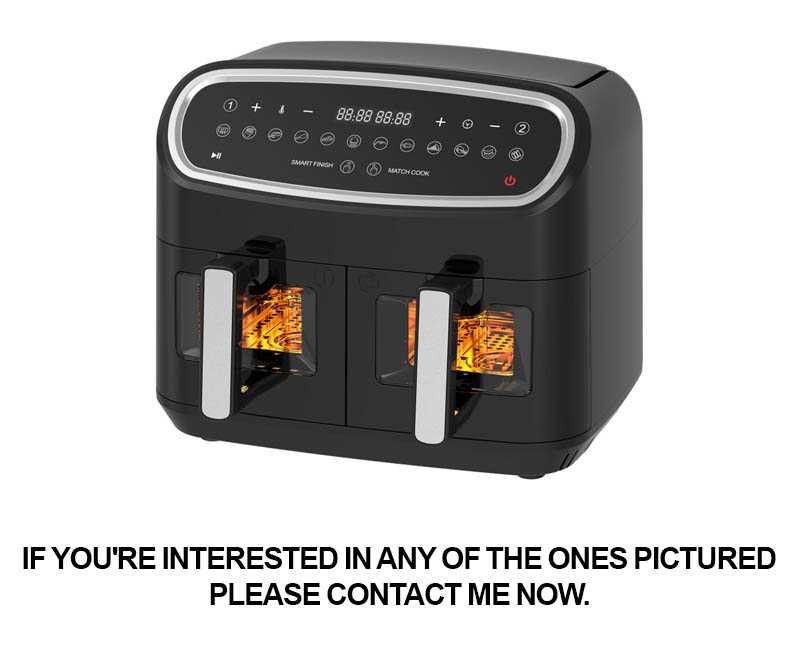
In the heart of the kitchen revolution, integrated circuit board factories are crafting the blueprints for a new culinary era. These intricate pieces of technology are not just components; they are the architects of smart kitchen appliances that are reshaping how we cook, clean, and manage our kitchen spaces. Let’s delve into the innovative designs emerging from these factories.
The miniaturization of technology has allowed for the creation of compact, efficient, and powerful integrated circuits that are the backbone of modern kitchen appliances. These circuits are designed with precision, ensuring that every appliance can perform its tasks with unparalleled accuracy and speed. From the smallest countertop blender to the most sophisticated range oven, the integrated circuit board is the unsung hero that enables these devices to communicate, learn, and adapt to their users’ needs.
One of the standout innovations from these factories is the integration of AI and machine learning into kitchen appliances. Smart fridges, for instance, can now analyze usage patterns and suggest meal plans based on the ingredients you have on hand. The integrated circuit board enables this level of intelligence, allowing the appliance to learn from its interactions and provide a more personalized experience. This not only simplifies meal preparation but also encourages healthier eating habits.
The evolution of touch interfaces has been another significant development. Integrated circuit boards have made it possible to incorporate capacitive touchscreens into kitchen appliances, replacing traditional buttons and knobs. This not only adds a sleek, modern aesthetic but also improves usability. Users can now swipe, tap, and pinch to adjust settings, offering a more intuitive and responsive control system.
Energy efficiency is a critical factor in kitchen appliance design, and integrated circuit boards are playing a pivotal role in this aspect. By optimizing the flow of electricity and managing power consumption, these circuits help reduce energy waste. Smart appliances can enter sleep mode when not in use, and they can adjust their performance to match the current power demands, resulting in significant energy savings over time.
Safety features are also being enhanced through the use of integrated circuits. Sensors and monitoring systems are being integrated into appliances to detect potential hazards, such as over-heating or gas leaks, and to alert users accordingly. This proactive approach to safety ensures that kitchen appliances are not just tools but also guardians of the home environment.
In the realm of connectivity, integrated circuit boards are the key to seamless integration with other smart devices. Smart ovens, for example, can be controlled remotely via a smartphone app, allowing users to preheat their ovens while still at work. This level of connectivity is transforming the kitchen into a hub of smart home technology, where appliances can communicate with each other to create a more efficient and user-friendly environment.
Another innovation is the use of IoT (Internet of Things) technology within kitchen appliances. These devices can now collect data on usage, performance, and even the condition of the appliance itself. This data can be analyzed by the manufacturer to improve product design and provide users with predictive maintenance tips, ensuring that their appliances remain in optimal working condition.
Customization is also becoming a hallmark of modern kitchen appliances, thanks to integrated circuit boards. Users can now choose from a variety of settings and modes that cater to their specific cooking preferences. Whether you’re a gourmet chef or a casual cook, the integrated circuit board allows for a tailored experience that meets your unique needs.
The design of integrated circuit boards is also becoming more sustainable. As awareness of environmental impact grows, factories are focusing on the use of eco-friendly materials and processes. This includes the recycling of materials and the reduction of waste during production, ensuring that the technology driving our kitchens is as environmentally responsible as it is innovative.
In conclusion, the innovative designs emerging from integrated circuit board factories are transforming the kitchen into a place of advanced technology and convenience. From AI-driven meal suggestions to energy-efficient operation and enhanced safety features, these circuits are the heart of a new era of smart kitchen appliances. As technology continues to evolve, we can expect even more sophisticated and user-centric designs to emerge, making cooking not just a daily chore but an experience that is as smart as it is delicious.

In the realm of smart kitchen appliances, there are several standout examples where innovation and technology have seamlessly integrated into everyday cooking experiences, creating success stories that inspire the industry. Here are a few such case studies:
A Smart Oven That Learns Your PreferencesA European-based appliance manufacturer launched a smart oven that not only preheats and cooks meals with precision but also learns from the user’s cooking habits. Through a series of interactive prompts and AI algorithms, the oven adapts its settings based on the user’s taste preferences, cooking times, and desired outcomes. Within weeks, the oven has become a tailored cooking assistant, reducing cooking times and ensuring the perfect meal every time.
The Smart Fridge Revolutionizing Inventory ManagementA well-known brand in the US market introduced a smart fridge that uses IoT technology to track and manage inventory. The fridge communicates with a user’s smartphone, sending notifications when items are running low and suggesting recipes based on the available ingredients. This not only simplifies grocery shopping but also encourages healthier eating habits by reducing food waste and planning meals around what’s on hand.
A Compact Kitchen Appliance That Saves Space and EnergyIn a small urban apartment, a single homeowner faced the challenge of limited kitchen space. They turned to a small appliance manufacturer that designed a multifunctional unit capable of toasting, broiling, and grilling. The appliance’s compact design allowed it to be placed on a countertop, while its energy-efficient features meant it consumed significantly less power than traditional appliances. The result was a kitchen that felt spacious and a satisfied customer who could enjoy a variety of meals without sacrificing space.
Smart Kettle That Enhances Tea and Coffee ExperienceFor tea and coffee aficionados, a new smart kettle promises a tailored brewing experience. The kettle connects to an app that allows users to select their preferred brewing temperature, steep time, and even water hardness. The kettle’s LED display shows the brewing progress, and it can be controlled remotely, ensuring that the perfect cup of tea or coffee is ready at the touch of a button. This case study highlights how smart technology can elevate a simple daily ritual into an enjoyable experience.
Interactive Range Hoods That Monitor Air QualityA kitchen appliance company developed an interactive range hood that not only helps in controlling cooking temperatures but also monitors air quality. The hood’s sensors detect smoke, steam, and odors, adjusting its fan speed to maintain optimal air circulation. Additionally, it provides real-time air quality data and recommendations for healthier cooking environments. This innovation addresses the need for cleaner indoor air and a more pleasant cooking atmosphere.
Smart Blender That Offers Personalized Nutritional InsightsFor those interested in health and wellness, a smart blender that connects to a health app offers a unique experience. The blender not only blends smoothies and shakes but also provides nutritional information based on the ingredients used. The app suggests recipes tailored to specific dietary needs and tracks the user’s consumption over time. This integration of kitchen technology with health tracking tools has made meal preparation a more informed and personalized process.
These case studies illustrate how integrated circuit board factories have been at the forefront of smart kitchen appliance innovation. By focusing on user needs, efficiency, and convenience, these success stories are reshaping the way we cook and live, making smart kitchens a reality for more and more households.
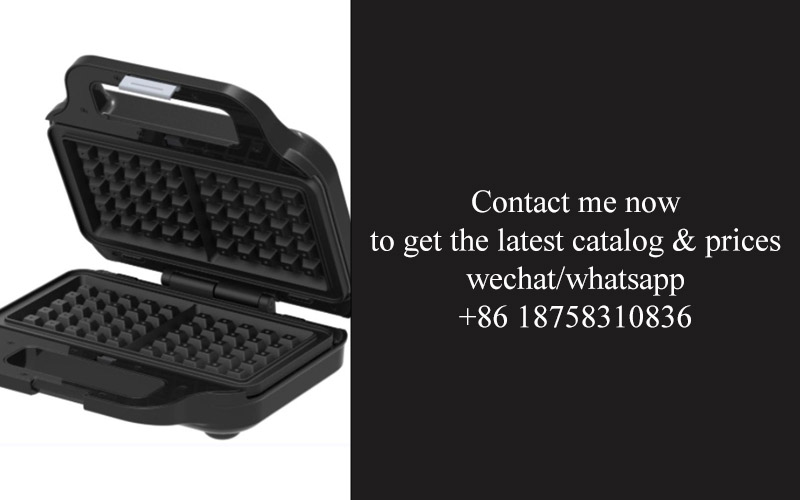
In the rapidly evolving landscape of the kitchen appliance industry, challenges and solutions go hand in hand. From adapting to technological advancements to navigating consumer demands, the industry faces a myriad of obstacles. Here’s a closer look at some of the key challenges and the innovative solutions being implemented.
The integration of smart technology into kitchen appliances has brought about a wave of connectivity and convenience, but it’s not without its hurdles. One major challenge is ensuring compatibility across various devices and platforms. Manufacturers must balance the desire for seamless integration with the need for user-friendly interfaces. Solutions include the development of standardized protocols and the creation of user-centric designs that prioritize ease of use.
Energy efficiency remains a cornerstone in the kitchen appliance industry. As environmental concerns grow, consumers and regulators alike are pushing for more sustainable options. A challenge here is the trade-off between energy-saving features and cost. Companies are responding by investing in research and development to create appliances that are both energy-efficient and affordable. Smart sensors, adaptive cooling systems, and intelligent power management are just a few of the solutions being explored.
User safety is paramount, especially when dealing with appliances that are now equipped with sharp blades, high temperatures, and complex mechanical parts. Ensuring these devices are safe for everyday use is a challenge that requires rigorous testing and quality control. Solutions involve implementing advanced safety features such as emergency stop mechanisms, child locks, and intelligent diagnostics that alert users to potential hazards.
The rise of smart kitchen appliances has also brought about a challenge in data security. With the increasing amount of data collected by these devices, protecting consumer information is crucial. Manufacturers are addressing this by implementing robust encryption methods, secure cloud storage, and transparent privacy policies. Regular software updates and vulnerability assessments are also part of the strategy to maintain data integrity.
The customization of appliances to meet individual preferences is another challenge. While personalization can enhance user satisfaction, it can also complicate production and inventory management. Solutions include modular designs that allow for easy upgrades and replacements, as well as the use of advanced manufacturing techniques like 3D printing for customized parts.
The global supply chain has been under immense pressure, especially in the wake of the COVID-19 pandemic. Appliance manufacturers have faced disruptions in the supply of raw materials and components. To overcome this, companies are diversifying their supply chains, establishing strategic partnerships, and investing in local manufacturing capabilities. This not only reduces reliance on a single source but also enhances resilience in the face of future disruptions.
Innovation in material science is also a key challenge. As consumers demand more durable and sustainable appliances, manufacturers are looking to new materials that can withstand the test of time while minimizing environmental impact. Solutions involve collaborations with material scientists and the adoption of biodegradable materials, recycled plastics, and advanced metals that are both strong and sustainable.
Lastly, the challenge of maintaining brand loyalty in a highly competitive market is significant. Companies are tackling this by focusing on customer experience, offering exceptional after-sales service, and fostering a strong brand identity through innovation and quality. Engaging with customers through social media and personalization services also helps in building a loyal customer base.
In conclusion, the kitchen appliance industry is a dynamic field where challenges are met with innovative solutions. From smart technology integration to sustainability and user safety, the industry continues to evolve, driven by consumer needs and technological advancements. By embracing these challenges and finding creative solutions, the industry can pave the way for a future where kitchens are not just places for cooking but hubs of innovation and convenience.
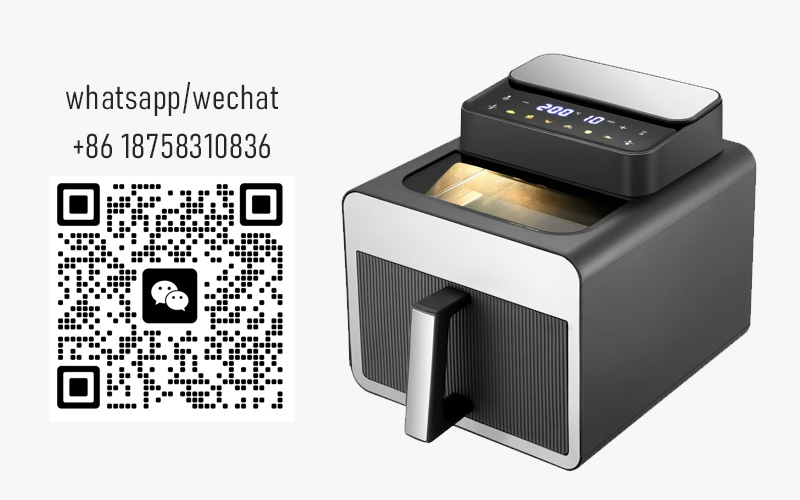
In the ever-evolving landscape of kitchen appliances, the role of integrated circuit (IC) boards is becoming increasingly pivotal. These tiny, yet powerful components are the beating heart of modern kitchen technology, driving innovation and efficiency. As we delve into the future, it’s clear that the development of IC boards in kitchen appliances will continue to push boundaries and redefine what’s possible in the culinary domain.
The integration of smart technology into kitchen appliances has been a game-changer, and the advancements in IC board design are at the forefront of this transformation. From the smallest countertop blender to the most sophisticated oven, these boards are the unsung heroes that make smart cooking a reality.
One significant trend is the miniaturization of IC boards. As technology advances, the size of these boards has shrunk, allowing for more compact and sleek kitchen appliances. This trend is not just about aesthetics; it’s about making smart technology accessible to a wider range of consumers, including those with limited kitchen space.
Energy efficiency is another critical area where IC boards are making a difference. With the growing emphasis on sustainability, appliances that consume less energy are becoming more popular. IC boards are enabling this shift by optimizing energy use and reducing waste. For instance, smart refrigerators can now precisely control their cooling systems, ensuring that food stays fresh while using less power.
The integration of IoT (Internet of Things) capabilities is also a major development. IC boards are now capable of connecting kitchen appliances to the internet, allowing for remote control, data analytics, and even predictive maintenance. This connectivity means that homeowners can monitor their appliances from anywhere, receive alerts about maintenance needs, and even adjust settings based on real-time data.
In the realm of cooking, IC boards are enabling precision and consistency that was once impossible. Smart ovens, for example, can adjust their heat distribution and cooking times based on the type of food being prepared. This not only ensures better results but also saves time and energy.
Safety is a paramount concern in kitchen appliances, and IC boards are playing a crucial role in enhancing it. Advanced sensors and algorithms within these boards can detect and prevent hazards such as overheating or gas leaks. This level of safety is particularly important in appliances like stoves and ovens, where accidents can have severe consequences.
The customization of kitchen appliances is also on the rise, thanks to IC boards. Users can now tailor their appliances to their specific needs and preferences. For example, a smart oven might offer a range of pre-programmed cooking modes or allow users to create their own recipes that the appliance can follow.
As we look at case studies of successful smart kitchen appliance integration, we see a variety of applications. One such case is the integration of AI into kitchen appliances. AI-powered appliances can learn from user habits and preferences, offering personalized cooking recommendations and even suggesting new recipes based on the ingredients in the home.
Another notable case is the development of voice-controlled kitchen appliances. With the rise of smart speakers and voice assistants, users can now control their appliances with simple voice commands, making cooking more accessible to those with physical limitations or busy hands.
Challenges in the industry include the need for compatibility between different brands and models of appliances. Consumers want the freedom to mix and match their kitchen technology, but achieving seamless integration is not always straightforward. IC board manufacturers are working on universal solutions that can bridge these gaps.
Security is also a concern, as smart appliances are increasingly connected to the internet. Ensuring that these devices are secure from hacking and unauthorized access is a priority for both manufacturers and consumers.
The future of IC board development in kitchen appliances is bright, with several key predictions shaping the landscape. One is the continued push towards greater energy efficiency and sustainability. As the world becomes more environmentally conscious, appliances that consume less energy and have a smaller carbon footprint will be more attractive to consumers.
Another prediction is the further integration of AI and machine learning. Appliances will become even more intuitive, learning from user habits and adapting to changing needs. This could lead to appliances that not only cook food but also suggest ingredients and recipes based on dietary preferences and nutritional requirements.
Augmented reality (AR) is also expected to play a role in the future of kitchen appliances. Imagine using AR to visualize how a dish will look before you cook it, or to guide you through a complex recipe step by step. IC boards will be crucial in enabling these interactive experiences.
Lastly, the rise of 5G technology promises to revolutionize the way smart kitchen appliances communicate. With faster data transfer rates and lower latency, appliances will be able to process and respond to commands more quickly, leading to a more seamless and responsive cooking experience.
In conclusion, the development of IC boards in kitchen appliances is a testament to human ingenuity and the relentless pursuit of innovation. As these boards continue to evolve, they will undoubtedly shape the future of cooking, making it more efficient, personalized, and enjoyable for all.